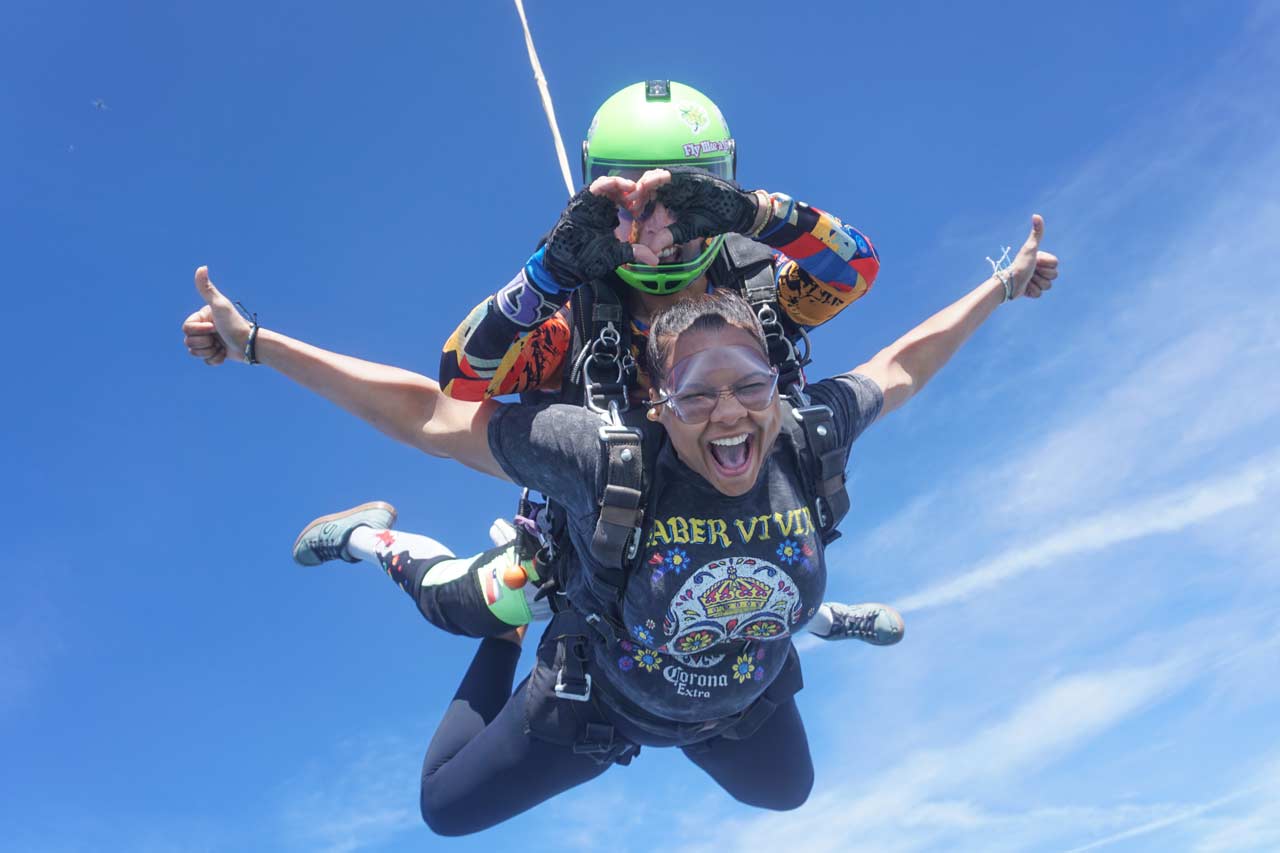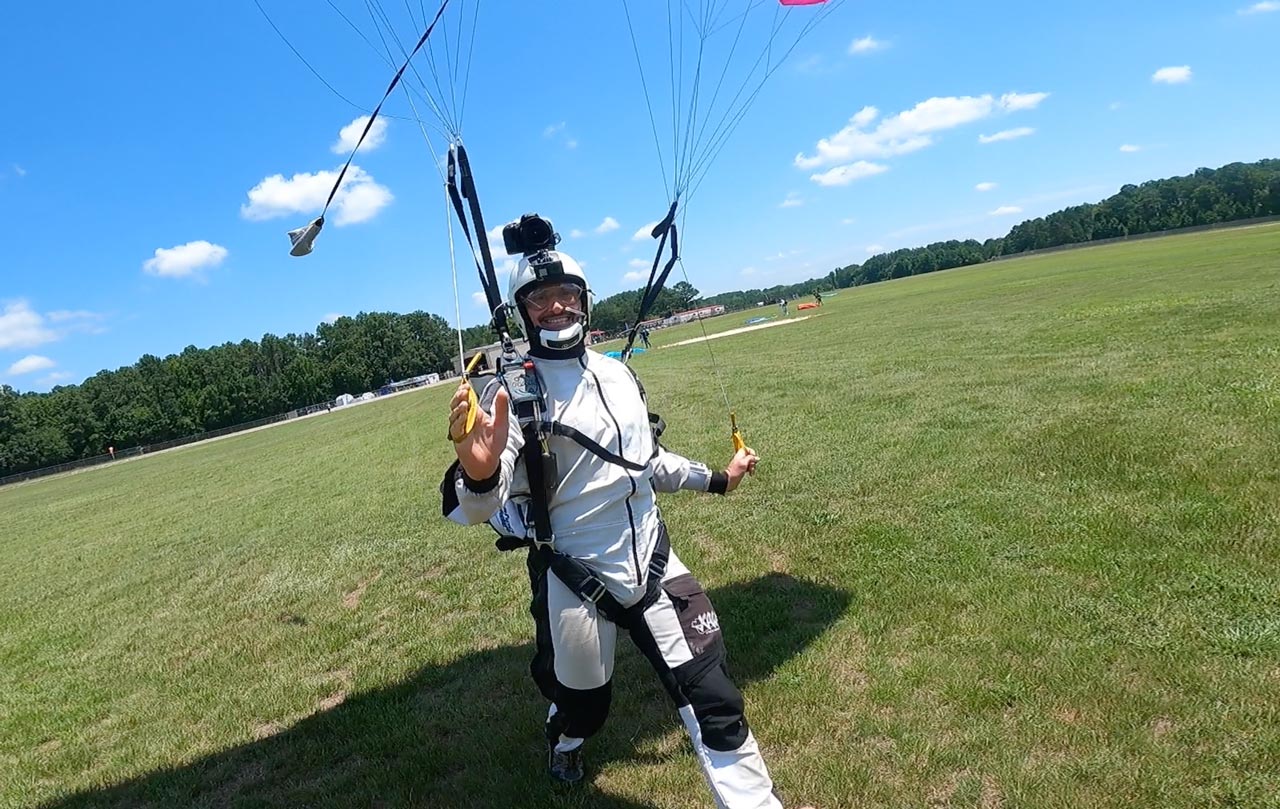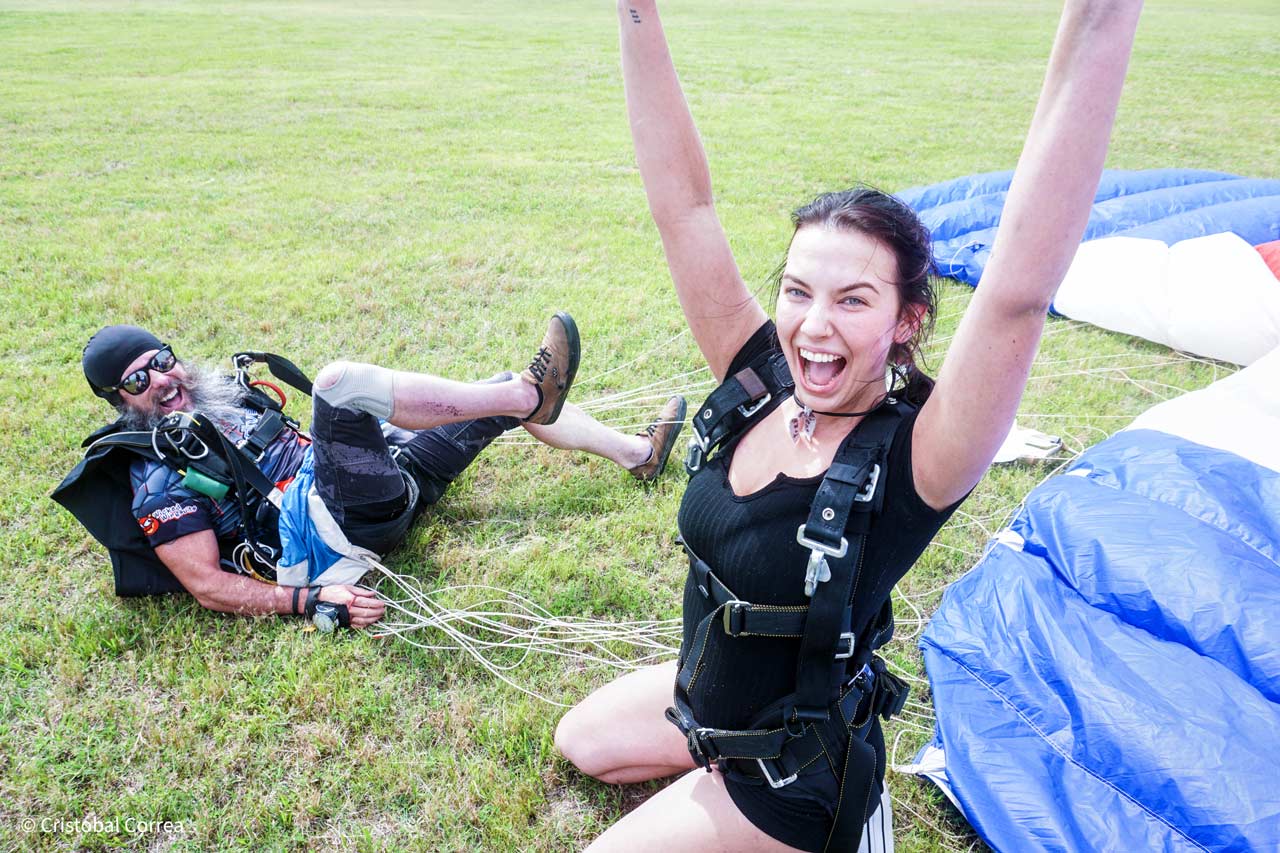How Dangerous is Skydiving?
General
4 months ago
Skydiving is one of the most exhilarating experiences you can have – it offers an adrenaline rush like no other. But for many, the idea of willingly leaping out of an airplane brings up a pretty serious question: How dangerous is skydiving?
Breathtaking views, freefall thrills, and an incredible sense of freedom can cause many to push the idea of risk to the sidelines, but not here at Skydive Carolina. We operate within a safety-first culture – we actively acknowledge that skydiving holds inherent risk and follow strict protocols in order to mitigate these risks. Let’s take a closer look.

What Is The Most Common Injury In Skydiving?
The most common skydiving injury is a banged up ankle. Why? Because we land on our feet! Or, licensed skydivers do, anyway. The United States Parachute Association (USPA) boasts about 41,000 licensed skydiver members. According to a recent USPA report: “Six percent of members reported that they experienced an injury that required medical treatment in 2023, the most common being ankle injuries from landing.
Most of the time, we slide into homebase with tandem students to avoid any lower extremity injury – it can be more difficult to coordinate running out a landing while two people are (literally) attached at the hip.
If Licensed Skydivers Are Trained … Why Do They Get Hurt?
GREAT question. The majority of skydiving accidents among licensed jumpers are due to human error. What does this mean … exactly? When skydivers are jumping by themselves (AKA, not tandem skydiving), they call the shots. Most skydiving injuries happen when someone is either a fresh baby bird with very few jumps and, therefore, lacking experience, or a highly-experienced jumper with a couple hundred skydives. Why? Two reasons:
- Lack of knowledge: When someone is just starting out, they’re doing a lot of things for the very first time. Not only are they exiting an airplane for the first time, but they’re experiencing freefall, navigating flying their canopy, and (perhaps most importantly), they’re landing their parachute all on their own. These “firsts” will change tone as the novice jumper continues in their jumping journey. For example, if someone has only ever jumped in super low winds (say, 5 mph), and then they do a jump in 15 mph winds, they may be pretty intimidated! But the next time they jump in 15 mph winds, their nerves will be less intense because they’ve already had exposure. Injuries are possible due to a lack of experience and knowledge, which is why only highly-experienced and savvy skydiving instructors are able to take first-timers on tandem jumps.
- Cockiness: Ah, let’s address the biggest elephant on the dropzone – being a littleee too sure of yourself! In skydiving (and life), there’s a stark difference between confidence and cockiness. Having the former is critical to skill progression, while the latter can be detrimental. Too often, skydivers will get a few hundred jumps under their belt and get a, “Psshhhh, I’ve seen it all” mentality that causes them to disregard basic safety and lose sight of the primary goal of every skydive: to walk away from it. The biggest tip to experienced jumpers when it comes to getting injured while skydiving is to know AND respect your limits – it’s that simple.
Although the majority of skydiving injuries come from ill-informed calls, there can still be the off-chance someone snags a toe on the grass and hurts their ankle, or bumps into the plane a little too hard upon exit, even though they (in theory) did everything right. The truth is, there are parts of skydiving that are just unpredictable. And although we do everything in our power to mitigate risk in all possible areas, there’s still an element of variability during each jump.

How Common Are Tandem Skydiving Accidents?
According to the USPA, the last decade has seen an average of one in every half million tandem skydives ending with a fatality. So, if the total tandem skydiving deaths per year is extremely low … is tandem skydiving safe? We would never say that skydiving is safe (and be wary of anyone who says otherwise).
Although advancements in technology and safety methods have drastically decreased the likelihood of accidents, the risks of skydiving can never be fully removed. Skydiving is an inherently dangerous activity, because it entails a human leaping from an airplane, falling at over 100 mph, and then piloting a parachute to the ground. It’s a lot of moving pieces working together!
Skydiving injuries highlight the importance of a ‘the learning never stops’ mentality and every skydiving accident is detrimental to the jumping community and beyond. When tandem skydiving accidents occur, they are due to rare and exceptional circumstances, so although they’re definitely possible, they’re not very common.
How Safe Is Skydiving With An Instructor? AKA Tandem Skydiving
Although skydiving with an instructor significantly reduces the skydiving risk factor, it’s still a high-stakes activity.
Tandem skydiving puts you way beyond the threshold of early-jumper-cockiness, because tandem skydiving instructors have at least 500 jumps (or even thousands of jumps) and years of jumping experience.
So, although skydiving can never be risk-free, tandem skydiving is statistically safer than going at it solo.

Should You Go Skydiving?
The dangers of skydiving present us with a tricky situation. On one hand, we want everyone who wants to give our sport a shot to go full send – we think it’s one of the best things this world has to offer! On the other hand, we would never strip someone of their autonomy to make an informed decision and try to convince someone to jump if they’re not into it. Remember that everyone is different, and we all have various experiences that form our perceptions of certain types of risk.
Skydiving is a serious activity that shouldn’t be taken lightly. If you decide leaping from an airplane is for you, we can’t wait to have you! If you’re in the debating stages, feel free to call us with any questions or swing by the dropzone to check out how we operate. Blue skies!




